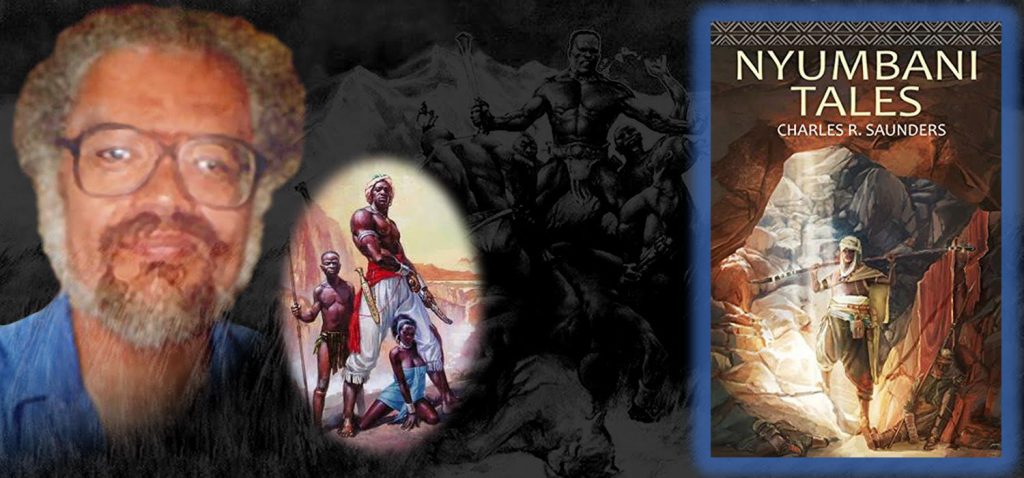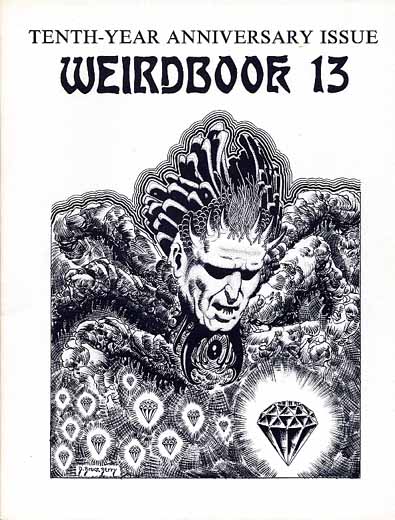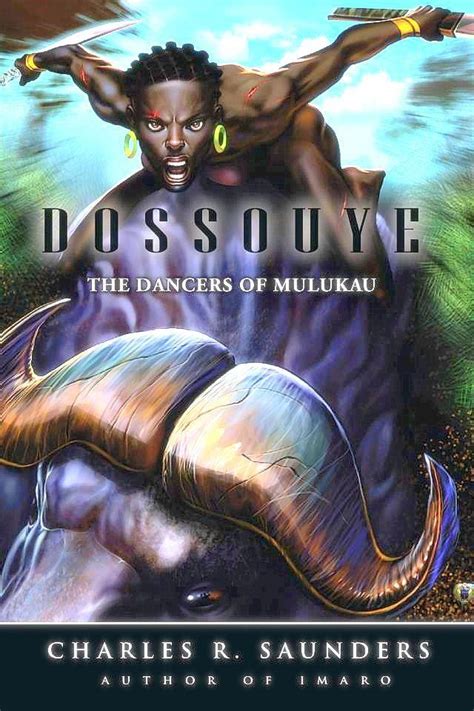
Charles R. Saunders’ Nyumbani Tales
by Bill Ward

In Nyumbani Tales (MV Media 2017), sword-and-sorcery great Charles Saunders collects 13 short stories spanning his early career, work that had previously appeared in a variety of publications, from small press ‘zines like Weirdbook and Black Lite, to mass market anthologies such as Beyond the Fields We Know and Hecate’s Cauldron. Fans of Saunders’ Imaro series will already be somewhat familiar with his short fiction, since the earliest parts of that epic were built upon the classic early Imaro shorts that first won the character his reputation. And, while many of the stories within Nyumbani Tales aren’t strictly speaking sword-and-sorcery, there are not only familiar faces here for Imaro fans, but a great deal of familiar ground as well.
That familiar ground, of course, is Nyumbani itself, Saunders’ fantastic African setting. An amalgam of different times and cultures, mythic and legendary elements as well as pure Weird Tales style invention, Nyumbani has been the unfolding backdrop for most of Saunders’ fiction. In his introduction to Nyumbani Tales and, perhaps even more importantly, in the biographical asides that preface each story in the collection, we get a glimpse at not only how Saunders’ writing evolved, but how his literary journey affected his secondary world of Nyumbani itself. These tales aren’t just re-collected here, but they have been polished and updated to further integrate them into the mythos of Nyumbani as it appears in the Imaro saga, for example by adding terminology like mchawi or Mashatan. If any good can be said to have come out of Saunders’ fraught publication history, it was in allowing him the opportunity to cohere and develop his grand setting over decades of reflection and refinement.

The stories themselves in Nyumbani Tales present a strong folkloric element, several being adaptations of traditional tales, others being fresh coinages operating within those same parameters of mythic storytelling. Some of the most memorable tales in the collection hit with the real power of legend, such as the dark tale of famine and deception “The Death Cattle of Djenne,” or the creepy and unsettling shape changer story “Amma.” One of my favorites was “Khodumodumo,” the story of a heroic sacrifice to defeat a ravenous monster that read like a perfect mix of pulp adventure and campfire tale, but with a pathos that would be impossible to achieve in the format of a re-occurring hero.
But myths aren’t of course all grim sacrifice and heroic tragedy, and many of the strongest pieces in Nyumbani Tales are humorous accounts of tricksters, frauds, and con men. Fan favorite Pomphis the Bambuti, Imaro’s diminutive companion, appears in two of the most fun tales in the collection: “The Blacksmith and the Bambuti” and “Pomphis and the Poor Man,” exhibiting both the cleverness and the kindness that is a hallmark of his character. In “Two Rogues” a pair of grifters engage one another in cross and double-cross, complete with sorcery, a poison-gas-assisted heist, and a shape-shifted hippo. And it would be difficult to find a better – and funnier – story reinforcing that old adage of ‘be careful what you wish for’ than “Okosene Alakun and the Magic Guinea Fowl.”

In stories like “Ishigbi,” an extended magical duel between twins, or the novella that closes the collection “The Silent Ghosts,” readers of Imaro or Saunders’ other major fantasy cycle, Dossouye, will find the kind of sorcerous, cataclysmic conflicts that are trademarks of those series. But so to do we see the essential humanity that lies at the heart of Saunders’ work – as good as he is at conjuring up a flight of wild fancy or conveying pulse-pounding action, he never lets the blades and battles or the lurid emerald glow of vile sorcery overshadow the people that live, laugh, suffer, and triumph in the many lands of Nyumbani. This, coupled with Saunders’ smooth and rolling prose, his relaxed confidence as a story teller, and his infectious love for the history and culture of Africa, makes Nyumbani Tales a fitting capstone to a lifetime of exploring Saunders’ own Bright Continent.
Sadly, 2020 marks the passing of Charles Saunders, and the promise raised in the introduction to Nyumbani Tales of further uncollected fiction being reissued – a collection of Imaro-specific tales to be entitled The Warrior’s Way – is perhaps no longer as certain as it was. But if my experience with Saunders’ fiction over the years has taught me anything, it’s that you can’t keep a good man – or a great writer – down for long. Here’s hoping that MV Media will be able to further honor the father of Sword & Soul with another collection to rival Nyumbani Tales.
And for a wonderfully informative and thorough look at the Imaro series that cuts through the confusion of its many multiple editions and uneven publishing history, please see S.E. Lindberg’s recent article at Black Gate: Imaro Series Tour Guide






